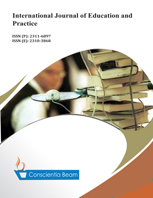Evaluating students’ willingness to use digital technologies
DOI:
https://doi.org/10.18488/61.v12i3.3820Abstract
The prevalence of digital technologies in education has fundamentally reshaped the learning landscape. Despite acknowledging their positive impact, limited studies exist in understanding the factors influencing students' engagement and its effect on teaching and learning outcomes. To address this gap, the study evaluates students' willingness to use digital technologies by utilizing the Unified Theory of Acceptance and Use of Technology (UTAUT) framework to analyze the determinants that shape students' usage patterns of digital technologies. A quantitative research approach included surveying 222 university students who were actively engaged with digital technologies. Data analysis comprised mean, standard deviation, and Pearson correlation calculations, with appropriate reliability and validity values established based on the obtained data. Correlation analysis validates the proposed model's hypothesis, revealing a statistically significant yet weak relationship between performance expectancy, effort expectancy, and students' willingness to use digital technologies. Conversely, social influence and facilitating conditions exhibit a moderately positive and statistically significant correlation with students' willingness to adopt digital technologies. These findings indicate factors that influence and have a positive relationship with students' willingness to use digital technologies, providing insights into effective ways for integrating and maximizing educational technologies in today's increasingly digital learning environment.





